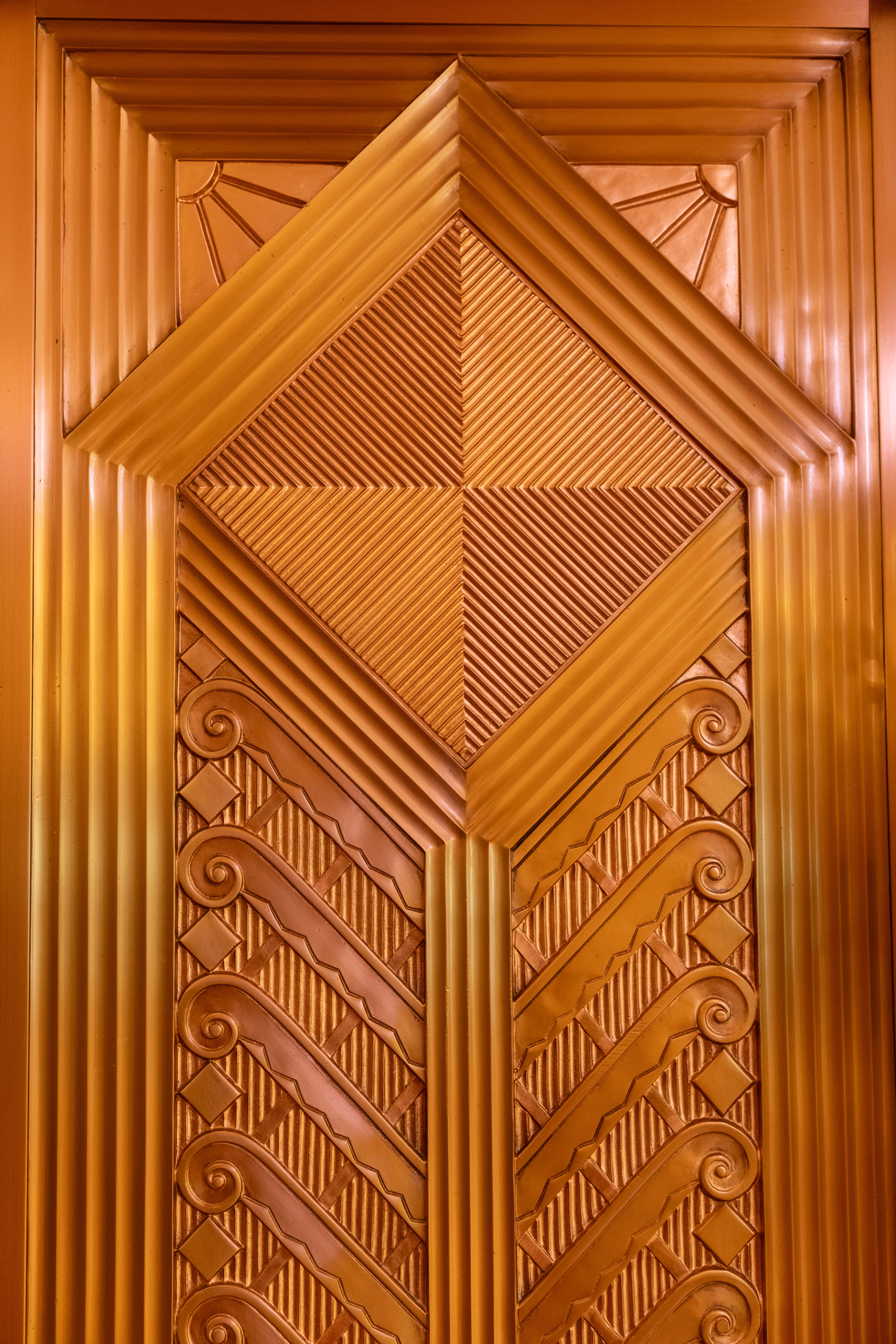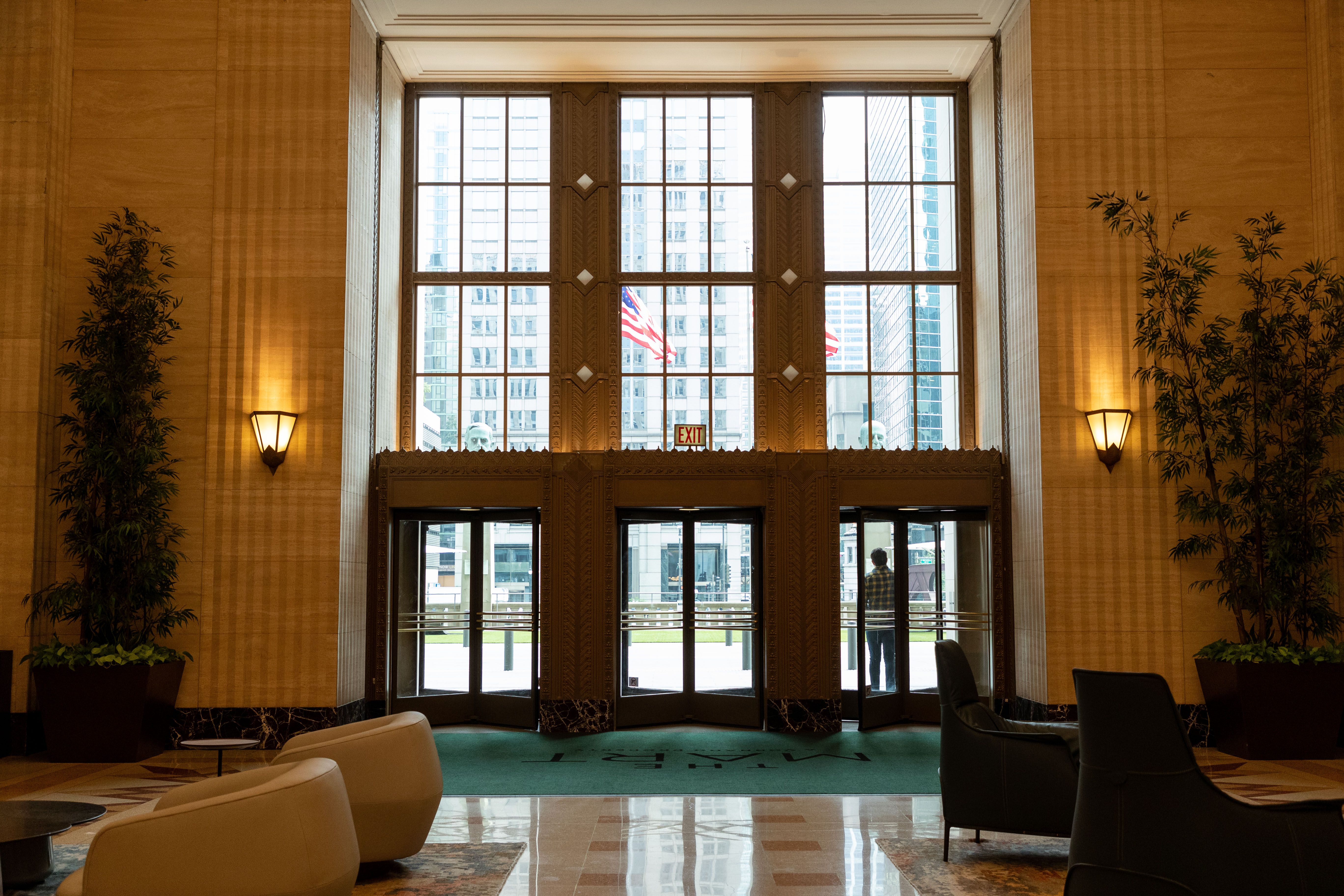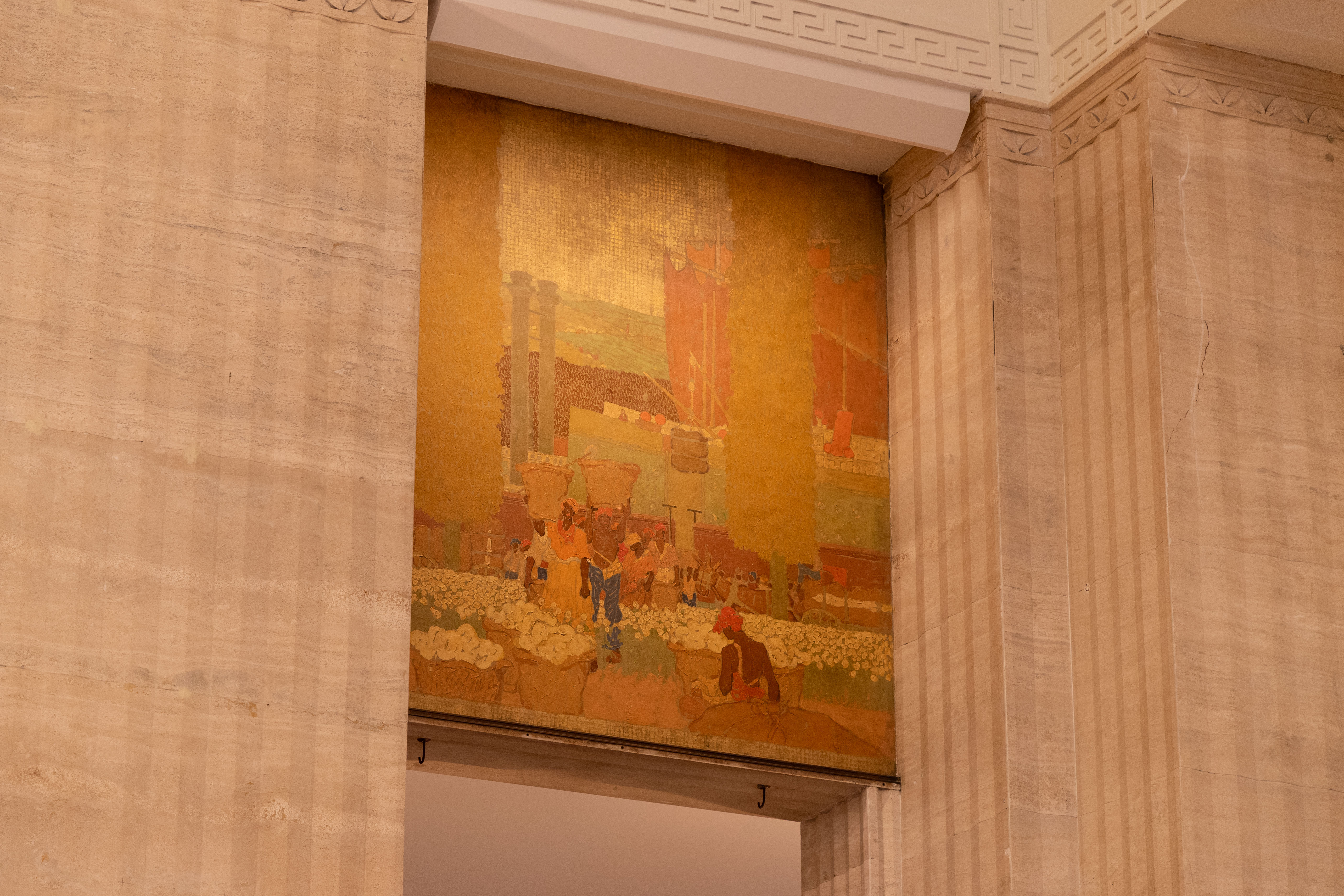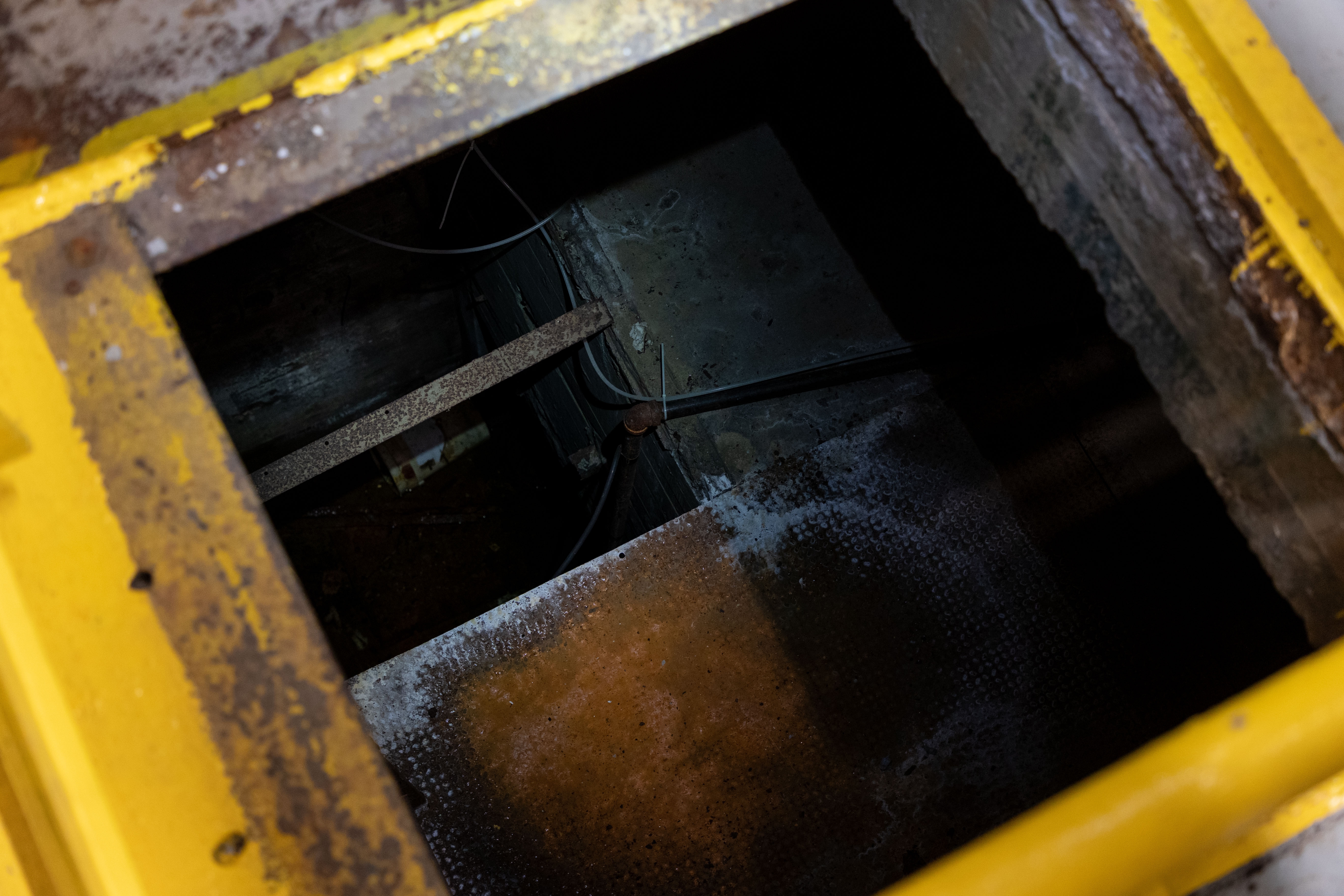Editor’s note: This story is part of a series of “What’s That Building?” stories this summer that focus on Chicago’s most iconic buildings.
The Merchandise Mart is a giant. At two blocks long and 25 stories high, the structure’s 4.2 million square feet made it the biggest building in the world when it opened in May 1930.
The physical size was equivalent to the colossal ambitions of the Merchandise Mart’s original mission, which was to completely upend the way products got into retail stores across the United States. For a few decades before, manufacturers in big cities like Chicago, New York and Philadelphia sent out troops of traveling salesmen to take samples of their wares to the merchants who operated stores in every city and town on the map.
But the leaders of Marshall Field’s wholesale division thought the opposite process would be better.
“Instead of attempting by means of sample cases, traveling salesmen and trunks to inadequately take the market to the merchant, bring the buyer to the market,” Charles Welles, general manager of Field’s project on the north bank of the Chicago River, told the Chicago Tribune a few days before the building opened.

Furniture, fabrics and other materials could all be set up in attractive displays, and merchants from, say, Davenport, Iowa, would come to town to pick out and order all the items they believed their customers would want.
Marshall Field’s spent about $28 million building this behemoth, and would be the biggest tenant with about a million square feet. Field’s was on a big growth binge in the late 1920s as the company bought department stores in Seattle, Wisconsin and other places. The year before Field’s opened the Mart, it opened its first two satellite stores in Oak Park and Evanston.

The architect of this vast project was Alfred Shaw of the prominent Chicago architecture firm Graham, Anderson Probst & White. Shaw created a colossus, with towers on the corners and the central part of the façade, columns of inset windows that emphasize the building’s verticality. But he also used Art Deco design elements to keep the structure from looking like a hulk. Bands of chevrons (V shapes) frame the doors and run like belts around the entire building, interrupted along the way by diamond-shaped dots. They give this enormous façade a hint of motion. The façade steps back at the upper floors, unlike a standard boxy warehouse building.
Then there are the entrances, where the doorways are framed by these ornate compositions of flowers, ferns, seed pods and other elements.
Merchandise Mart was a destination, complete with restaurants that reputedly could serve 15,000 people a day, stages for fashion shows, a bank, telegraph offices and a drug store. The plaza out front was also going to be the start of a boulevard along the north bank of the river, a parallel for Wacker Drive on the south bank, but that never materialized.

Out front, the heads of big characters in the nation’s department store heyday stand on pylons. Among them are Chicagoans Marshall Field and Julius Rosenwald, who ran Sears, and retailers from other cities, including John Wanamaker from Philadelphia and Edward Filene of Boston.
These heads were installed in 1953 as a “hall of fame,” and if they seem out of date now, that’s nothing compared to some other heads that have been removed. When the building opened in 1930, there were 56 sculpted heads of Native American chiefs along the top of the building, a decorative theme that was popular in the Art Deco era.
The grandeur of the exterior carries through inside, where there’s a main hallway the full two-block width of the building. Seventeen murals depict the history of trade, including spice traders in ancient Asia, camel caravans passing the pyramids in Egypt, and an image of African American women picking cotton. That last one suggests enslavement — though the specific time of the image isn’t clear — and was the subject of a petition drive in 2018 to have it removed or covered. Five years later, the mural is intact.

The wall paintings are by Jules Guerin, who also created murals at the Lincoln Memorial in 1922, as well as the Louisiana State Capitol and notable buildings in San Francisco and Cleveland.
The grand staircase is part of a 2018 lobby redesign by the Manhattan architecture firm A+I, and another redesign by the Chicago firm Gensler was unveiled last month.
These rounds of redesign were done by Vornado Realty Trust, the New York-based firm that bought the Mart and its neighboring Apparel Center in 1998. Vornado bought the Mart from the Kennedy family, which had owned the building for 53 years.
Although Marshall Field’s opened the building with big plans in 1930, the Great Depression got in the way. By the mid-1930s, the store’s ambitious wholesale program was wiped out. In 1945, the store said it was using just one-fifth of its million-square-foot portion of the Mart and didn’t want to be a landlord anymore. The company sold the building to a group of investors led by Joseph P. Kennedy, the wealthy Bostonian whose son John would later be elected U.S. president.
The group paid $16 million, down from the $28 million Field’s had spent to build the Mart less than 20 years earlier. Later that year, Joe Kennedy said the other investors were out and the Mart was owned entirely by his family.

In 2011, Joe Kennedy’s grandson (and Robert F. Kennedy’s son) Chris Kennedy told me his grandfather “invested in Chicago because he believed it was the crossroads of the nation.” That was 13 years after the family sold the Merchandise Mart, the neighboring Apparel Center and other real estate in Washington, D.C., to Vornado for $625 million.
Today the Mart isn’t so much about merchandise — that’s why it goes by the name the Mart now. The building is mostly offices, for everyone from Blommer Chocolate to Motorola Mobility, the cellphone maker. The 1871 business incubator launched by JB Pritzker in 2012 (seven years before he was elected governor) is also a tenant.
Rarely seen by visitors is a unique historic spot in the sub-basement of the Mart, four stories below the public spaces. Off to the side of one giant boiler room, a door in the floor opens to reveal a steel ladder that goes even lower, to the subterranean freight tunnels that were part of the Great Chicago Flood in 1992.

The infamous breach in the semi-forgotten tunnels was about a block away near the Kinzie Street Bridge, but it was because of floodwater rushing into the Merchandise Mart's basement that the catastrophe was first spotted. Mike Curtin, who has worked maintenance in the building since 1966, told WBEZ’s Reset he remembers there were fish swimming inside the basement.
"And ducks," he added.
Dennis Rodkin is the residential real estate reporter for Crain’s Chicago Business and Reset’s “What’s That Building?” contributor. Follow him @Dennis_Rodkin.
K’Von Jackson is the freelance photojournalist for Reset’s “What’s That Building?” Follow him @true_chicago.



